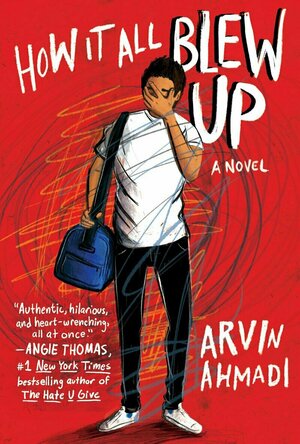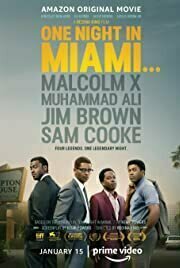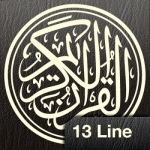
Quran Kareem 13 Line for iPhone & iPod
Book and Education
App
SHL info systems presents “ The most advanced Quran application ever made for a touch screen...

Tuntunan Bacaan Sholat Wajib dan Sholat Sunnah
Book and Reference
App
Tuntunan tata cara dan bacaan sholat wajib atau fardhu dan Sholat Sunnah lengkap dengan Hadist...
Purifying the Land of the Pure: A History of Pakistan's Religious Minorities
Book
When Pakistan was founded in 1947, it had a rich tapestry of different religious groups, ranging...
Ali A (82 KP) rated How It All Blew Up in Books
Sep 8, 2020
I went into this book thinking it would be a storyline I don't really see: representation of a queer Muslim in YA... I didn't really get that. Islam plays no part in this story - Amir openly admits his family isn't that religious. When asked if his parents would disapprove of him being gay, he replied:
"Yes and no. Our culture is pretty conservative, even if you're not religious."
It also went into this huge countdown leading up to what happened on the airplane and why the family is detained and when we get there... it just felt like it fell short of what it could have been. I also just didn't care much for the main character, he never really clicked with me and I honestly don't know why but I found myself rolling my eyes at a lot of his choices and reasonings.
The whole story also felt very unrealistic to me. How on Earth does an eighteen-year-old make enough money editing Wikipedia pages to get to Rome, get his own apartment, and live there a whole month? There were so many side characters that would be mentioned in passing for only a page and then never heard from again? Amir's high school boyfriend we get built up to be this whole thing, for him to just toss him aside. We had all these supposed close relationships (Amir and his sister were supposedly super close??) but everything felt surface level and not flushed out. There's an entire scene in the novel, that I won't get into because of spoilers, but it just felt wrong and had no real build up to the entire scenario besides small side remarks.
The only character I really even cared for was Amir's sister, Soraya. She was only thirteen, but she was a firecracker just waiting to be messed with. She cared for her brother, regardless of anything.
I did enjoy the back and forth of the interrogation rooms and what happened as it made it a super fast read. Apart from that though, I think the story fell short of what it could have been.
*Thank you Bookish First and Penguin Teen for a copy of this book in exchange for an honest review.
Hazel (1853 KP) rated Return to the Little Coffee Shop of Kabul (The Little Coffee Shop of Kabul #2) in Books
Dec 14, 2018
Five years since the publication of her fictional debut, fans of Deoborah Rodriguez will be pleased to know they can finally get their hands on the sequel: Return to the <i>Little Coffee Shop of Kabul</i>. In the first book (<i>The Little Coffee Shop of Kabul</i>) we are introduced to Sunny, a 38-year-old American, who has set up a coffee shop in the heart of Afghanistan. Now she has returned to the US, after the unfortunate death of her boyfriend, to a house on an island she did not really want. Meanwhile, her coffee shop struggles to continue in the hands of her Afghan friends.
The narrative alternates between the USA and Afghanistan, keeping the reader informed of two completely different scenarios. Sunny is dealing with the loss of Jack and her conflicted feelings over whether she should stay and live Jack’s dream lifestyle or return to her beloved Kabul. On the other hand, Yazmina and the others reveal to the reader how difficult and dangerous life is for the Afghanistan natives, especially for the women who have very little rights.
As well as the original characters, there are a number of new names introduced to the story. In Afghanistan a young girl is trying to escape an arranged marriage to an evil, rich man – something that has disastrous consequences for herself and her newfound friends. On the other side of the world, Layla, Yazmina’s sister, is experiencing Western culture living with Sunny, and is shocked at how friendly men and women are with each other.
Another new face to add to the mix is Kat, a young woman who escaped to America as a child and has turned her back on the traditions of Islam and the Afghan culture. Despite her growing friendship with Layla, she refuses to agree with Layla’s beliefs, particularly in regards to the <i>hijab</i>. Neither girl’s opinion is more valid than the other however, as they have both had completely different upbringings. Kat has spent the better part of her life relishing in the freedom of Western culture, whereas Layla finds comfort in her traditions.
<i>Return to the Little Coffee Shop of Kabul </i>contains a couple of powerful messages. Firstly, as Sunny realizes, you need to be thankful for what you have got and not assume that going back to a lifestyle you used to follow would be the same as it once was. On the flip side, the Muslim family in Kabul begins to learn that they do not have to put up with the strict, unfairness in the treatment of women, and can strive to do something about it.
It is not necessary to have read the previous book, as there is enough character description and history mentioned within the narrative for new readers to be able to follow along. It is also suitable for book groups as it contains a series of reading group questions at the end of the novel.
Despite its upsetting scenes,<i> Return to the Little Coffee Shop of Kabul </i>is essentially a happy book. The character Sunny, definitely lives up to her name; there is no over emphasis on any of the negative situations she or her friends find themselves in. In a world where it would be easy to fall into despair, Rodriguez has written a story with a positive outlook on life and hope for the future.
Lenard (726 KP) rated One Night in Miami (2020) in Movies
Jan 9, 2021
Like another recent film, the path is a choice between making changes within the system, like Sam Cooke and Jim Brown have attempted, or to change the system from the outside, like Malcolm and Clay. Both paths have their advantages, and both are also deadly. Within a year, both Malcolm and Cooke would be dead. The movie based on a play finds ways from each character to learn from the others by pairing them off in various combinations (Malcolm-Cooke, Brown-Clay, Cooke-Clay, Malcolm-Brown, Malcolm-Clay, Cooke-Brown). The main antagonism takes place between Cooke and Malcolm. Cooke sees Malcolm as a militant who is creating sowing seeds of fear in the eyes of "America" and Malcolm sees Cooke as a Stepin Fetchit with a huge amount of talent wasted playing by the rules. Cooke shows Malcolm that he is quietly taking control while Malcolm gives Cooke the spark to sing for civil rights for the less fortunate members of black society. Malcolm also begins to see how his actions have hurt his brothers by grouping all members of one race together similar to the way whites do not distinguish between black individuals. The movie never shies away from shading each hero with flaws.
Malcolm may be paranoid as evidenced by a couple scenes where he sees people on his trail who may or may not be real. Under a lot of pressure to break from his organization, Malcolm sees his staff betraying him to the feds who have been investigating him since he first started speaking. The whole subplot humanizes a man who many view as dangerous to the world. Jim Brown is also seen as a hero to most. He broke records and is about to conquer the film industry. Maybe they are using him, but he is using them to shine a light on the inequality of the races.
Lastly, one scene in the movie is a highlight. It is not in Miami, but in Boston. It shows how one man can turn a riot into a celebration of joy. With the main road blocked, a man of great talent can turn adversity into victory using his wits and his voice.

100 Great Muslims of all time around the world
Lifestyle and Education
App
Al-Khawarizmi is a trusted name in Islamic Apps development for years. We have sold thousands of...
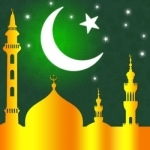
Ibadat - Quran Qibla & Mosque finder
Lifestyle
App
** Most Popular Quran app on Store ** ** More than 100,000 Downloads ** ** Amazing user experience...
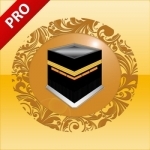
Muslim Prayer Times, Ramadan & Qibla Compass (Pro)
Lifestyle and Utilities
App
* This is the PRO version of the Muslim Prayer Times and Qibla compass app for you're iPhone, iPod...

Kurio – App Berita Indonesia
News and Lifestyle
App
Want to read more news that is more accurate and "sane"? Kurio is the place. Enjoy completeness of...

